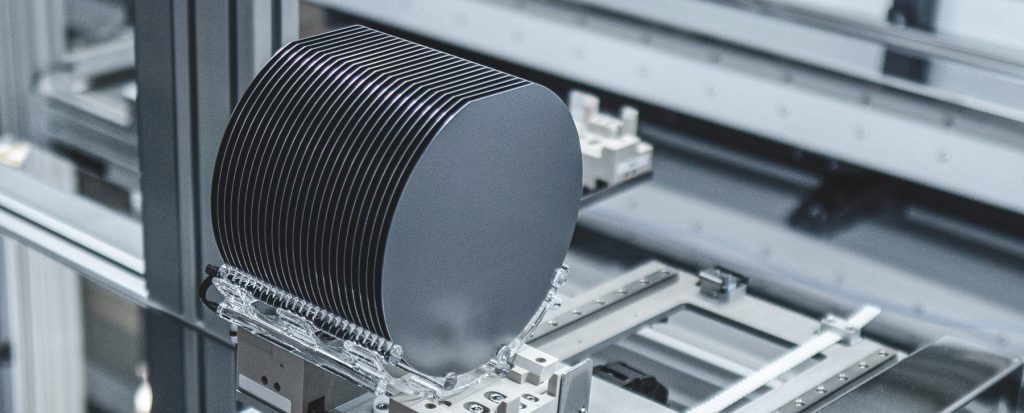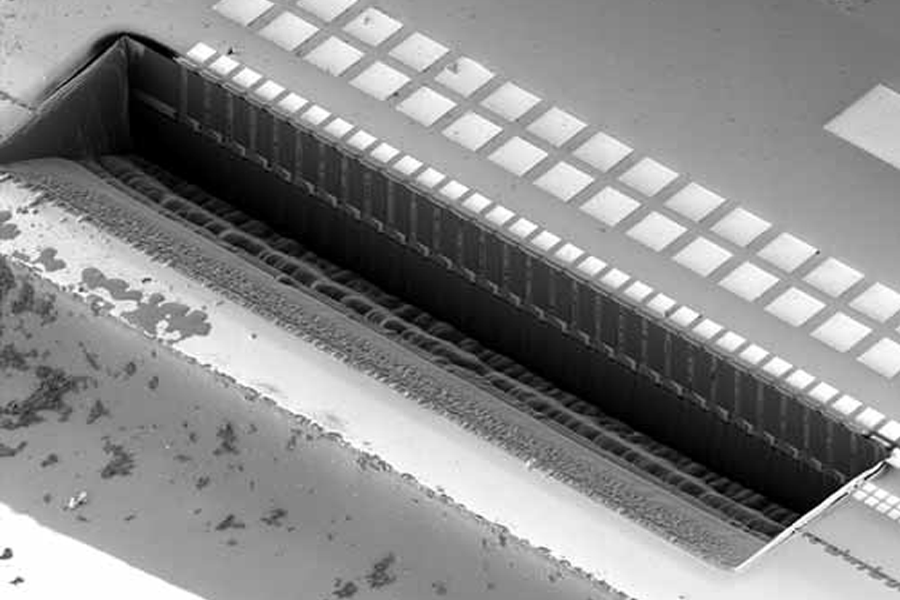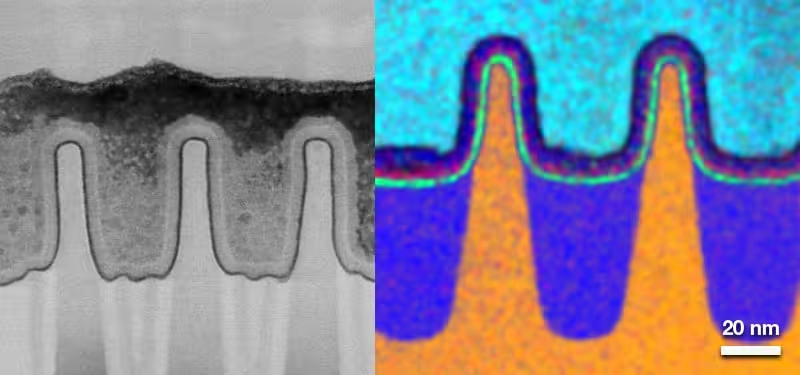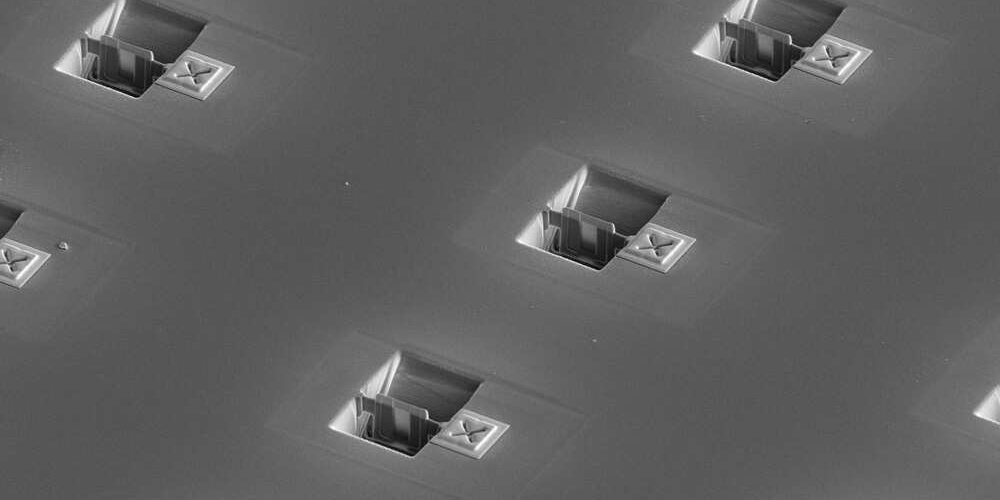Atomic Layer Deposition (ALD) Principles, Benefits, and Applications
Atomic Layer Deposition (ALD) Principles, Benefits and Applications Atomic Layer Deposition

Silicon nitride thin-film windows have become an important part of the semiconductor industry due to their unique properties. Silicon nitride thin film windows have a wide range of applications, from production to analysis, and play a key role in the development of new semiconductor devices and materials.
Silicon nitride thin film windows can be used as reactant monitoring windows. In semiconductor production, the stability of the manufacturing process is very important, because an unstable process will affect the quality and yield of the chip. Therefore, by monitoring parameters such as concentration and temperature of reactants in real time, precise control of the process can be achieved.
The high transmittance and excellent chemical inertness of silicon nitride thin-film windows make them ideal for reactant monitoring. For example, in chemical vapor deposition (CVD) processes, silicon nitride thin-film windows can be used to monitor parameters such as precursor gas concentration and reaction temperature for process stability.
Silicon nitride thin film windows can be used as windows for surface analysis. Semiconductor surface analysis is an important field in the semiconductor industry, including surface composition analysis, surface morphology analysis and surface defect analysis.
For example, in scanning electron microscopy (SEM), the silicon nitride thin-film window can be used as a sample holder window, which can keep the sample in a dry state under vacuum environment to avoid sample surface contamination and oxidation, and can provide a high transmission rate electron beam to improve the resolution and signal-to-noise ratio of SEM analysis.

Silicon nitride thin film windows can be used as windows for optical analysis. In semiconductor production, optical analysis is very important to check the performance and quality of semiconductor materials and devices.
Silicon nitride thin-film windows with high transmittance and excellent optical properties can be used in optical microscopes, Raman spectrometers, Fourier transform infrared spectrometers, and other optical analysis instruments. For example, in Raman spectrometers, silicon nitride thin-film windows can provide a high transmittance laser beam, enabling high sensitivity and high resolution analysis of samples.
In semiconductor manufacturing, temperature measurements are important because many process parameters are closely related to temperature. For example, in the deposition process, the deposition rate is related to the deposition temperature. In addition, during annealing and baking, temperature also has an impact on material properties and crystal quality.
Silicon nitride thin film windows can be used as part of a temperature sensor because of the temperature sensitivity of silicon nitride. In semiconductor production, silicon nitride thin-film windows can be used as reflective temperature sensors. Reflective temperature sensors measure temperature by measuring the intensity of light reflected from the surface of a material. When the temperature of the material surface changes, the reflectivity of the material surface also changes, so the change in temperature can be inferred by measuring the change in reflectivity.The use of silicon nitride thin-film windows as reflective temperature sensors enables non-contact temperature measurement of semiconductor materials. In addition, the silicon nitride thin-film window has excellent high-temperature resistance and can work stably for a long time at high temperatures, making it suitable for temperature measurement at high temperatures.
Infrared spectroscopy is a non-destructive testing method that can be used for the characterization and quality control of semiconductor materials. The application of silicon nitride thin film windows in infrared spectroscopy detection is mainly for the optical windows of infrared spectrometers. The high light transmission and chemical inertness of silicon nitride films make them an excellent optical window material for infrared spectroscopy analysis. In infrared spectroscopy analysis, the absorption spectrum of the sample needs to be collected, and the silicon nitride thin film window can transfer the infrared spectrum of the sample to the spectrometer to get the infrared spectral information of the sample.

In-situ reflectance spectroscopy is a technique for in-situ monitoring of the growth of film layers on the surface of semiconductor wafers, where the growth and change of the film can be detected by analyzing the spectral characteristics.
The application of silicon nitride thin film windows in in-situ reflection spectroscopy monitoring is mainly as optical windows on the wafer surface. With excellent light transmission and chemical stability, silicon nitride thin film windows can provide clear spectral signals in in-situ reflection spectroscopy monitoring, thus enabling real-time monitoring of the film growth process on the surface of semiconductor wafers.
Micro and nano structure preparation is a technique for preparing micron-level structures by photolithography and etching, which can be used for semiconductor device preparation. The application of silicon nitride thin film windows in microstructure preparation is mainly as an etching mask to transfer the optical pattern from the sample surface to the photoresist and then etch it to finally form the desired microstructure. Silicon nitride thin film windows have high light transmission and chemical stability and can be used in etching processes with different types of photoresists and etchants.

In summary, silicon nitride thin film windows have a wide range of application scenarios in semiconductor production and analysis for preparation, characterization, and quality control. Its superior performance and high reliability make it an indispensable material for semiconductor production and analysis.
We offer Silicon Nitride Thin Film Windows / MEMS Customization ServicesPlease feel free to leave a message.
Atomic Layer Deposition (ALD) Principles, Benefits and Applications Atomic Layer Deposition
Variation of refractive index and absorption coefficient of amorphous silicon at different wavelengths In the study of the
Classification, Characteristics, and Applications of Physical Vapor Deposition (PVD) Physical Vapor
.jpg)